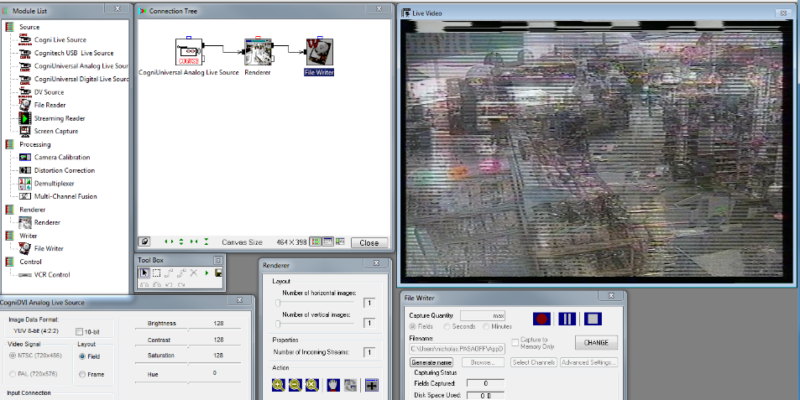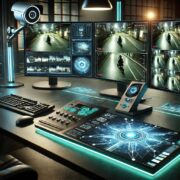Have you ever wondered how digital forensic experts achieve precise image analysis in their investigations? How do they ensure an accurate representation of real-world scenes captured in images? And what if I told you that there are hidden secrets in the realm of camera calibration and lens correction that can significantly enhance their accuracy?
Welcome to the world of advanced image processing for digital forensics, where camera calibration and lens correction are the unsung heroes. In this article, we will unlock the mysteries behind these techniques and explore their vital role in digital forensics investigations.
Understanding Camera Calibration and Lens Correction.
In this section, we will explore the concept of camera calibration and lens correction and their relevance to digital forensics investigation. Understanding these processes is essential for achieving accurate image analysis and minimizing optical distortion in forensic analysis.
The Importance of Camera Calibration
Camera calibration is a fundamental step in a digital forensics investigation, ensuring the accurate representation of real-world scenes in images. It involves determining the intrinsic and extrinsic parameters of a camera, such as focal length, lens distortion, and camera position, to correct for any inconsistencies or errors.
By calibrating a camera, forensic experts can account for optical distortions and variations in image formation caused by lens imperfections, sensor non-linearity, or geometric misalignment. This process significantly enhances the accuracy of measurements and analysis performed on the images obtained, crucial in forensics investigation where precision is paramount.
The Role of Lens Correction
In addition to camera calibration, lens correction is another crucial technique employed in digital forensics investigation to compensate for the optical distortions introduced by lenses. Lens distortions can include barrel distortion, pincushion distortion, or chromatic aberration, which can hinder accurate image analysis.
Through lens correction, these distortions can be effectively mitigated, resulting in images that closely resemble the real-world scene. This process involves applying algorithms to adjust the image by reversing the effects of the lens distortions, ensuring that the forensic expert can analyze the image accurately and make reliable judgments.
Enhancing Digital Forensics Investigation
Camera calibration and lens correction are integral to achieving precise image analysis in the field of digital forensics investigation. By accurately representing real-world scenes and compensating for lens distortions, these techniques contribute to the overall accuracy and reliability of the evidence documented.
Moreover, the application of camera calibration and lens correction in image processing enables forensic experts to measure objects or distances accurately, identify minute details, and perform photogrammetric analysis effectively. These techniques are invaluable in various forensic disciplines, including crime scene examination, document analysis, and facial recognition.
By embracing camera calibration and lens correction, digital forensics experts can enhance their investigative capabilities, improve the accuracy of their findings, and strengthen the integrity of their evidence.
The Role of Camera Calibration and Lens Correction in Digital Forensics Investigation.
In digital forensics investigation, the practical application of camera calibration and lens correction is critical. These techniques contribute significantly to forensic photography, enabling accurate documentation and analysis of evidence. By integrating camera calibration and lens correction into the investigative process, forensic experts can achieve reliable results and enhance the overall accuracy of their image analysis.
Forensic photography plays a vital role in documenting and preserving evidence. It involves capturing images that accurately represent the crime scene and the physical evidence present. However, the accuracy of these images can be affected by various factors, including camera distortions and lens imperfections. This is where camera calibration and lens correction come into play.
Camera calibration is the process of determining the relationship between the camera sensor and the physical world. It ensures that the images captured by the camera accurately depict the scene they were taken in. By calibrating the camera, forensic photographers can minimize distortions and accurately represent objects’ size, shape, and position in the images, crucial for evidence analysis.
“Camera calibration eliminates any inaccuracies introduced by the camera, allowing for more precise measurements and analysis of the evidence captured in the images.”
Lens correction, on the other hand, compensates for optical distortions introduced by lenses. These distortions can include barrel distortion, pincushion distortion, and perspective distortion. By applying lens correction algorithms to the captured images, forensic experts can rectify these distortions and obtain more accurate representations of objects and scenes, aiding in the analysis of evidence.
In addition to camera calibration and lens correction, lens calibration is another essential aspect of the digital forensics investigation process. Lens calibration involves measuring and documenting the specific characteristics of a lens, such as focal length and distortion, to ensure accurate image processing. By thoroughly calibrating the lens, forensic experts can minimize errors and discrepancies in image analysis, further enhancing the reliability of the investigative process.
Overall, the integration of camera calibration and lens correction techniques into digital forensics investigation is crucial for accurate evidence analysis. Forensic photography, supported by these techniques, enables the documentation, measurement, and analysis of evidence with higher precision. By minimizing optical distortions and ensuring accurate image processing, camera calibration and lens correction play a vital role in the success of digital forensic investigations.
Conclusion.
Camera calibration and lens correction are essential components of digital forensics investigations. By employing these advanced image processing techniques, forensic experts can enhance the accuracy of image analysis, reduce optical distortion, and ensure reliable results.
Through camera calibration, professionals can ensure that images accurately represent real-world scenes, providing a solid foundation for forensic examination. By adjusting for lens distortions, lens correction compensates for optical aberrations introduced by lenses, enabling a more accurate analysis of digital evidence.
The integration of camera calibration and lens correction not only improves image quality and clarity but also enhances the overall precision of forensic investigations. These techniques enable investigators to identify crucial details, examine evidence with greater accuracy, and support more confident conclusions.
In the field of digital forensics, where the reliability of evidence is paramount, understanding the significance of camera calibration and lens correction is vital. By implementing these sophisticated tools, forensic experts can greatly enhance their image analysis capabilities and ensure accurate and defensible results in their investigations.
FAQ
What is camera calibration?
Camera calibration is the process of determining the intrinsic and extrinsic parameters of a camera to accurately represent real-world scenes in images. It involves calibrating the camera’s lens to correct for distortion and other factors that can affect image accuracy.
Why is camera calibration important in digital forensics investigation?
Camera calibration is crucial in digital forensics investigation as it ensures accurate documentation and analysis of evidence. By calibrating the camera’s lens, forensic experts can reduce optical distortions and enhance the overall accuracy of images, which is vital in forensic image analysis.
What is lens correction?
Lens correction is the process of compensating for optical distortions introduced by camera lenses. It involves removing distortions such as barrel distortion and pincushion distortion, which can affect the accuracy of images. Lens correction is commonly used in digital photography and digital forensics investigation.
How does lens correction contribute to digital forensics investigation?
Lens correction plays a significant role in digital forensics investigation by improving the accuracy of image analysis. By correcting lens distortions, forensic experts can obtain more precise measurements and enhance the clarity of details in images, leading to more reliable and valuable forensic evidence.
How does integrating camera calibration and lens correction improve digital forensics investigation?
Integrating camera calibration and lens correction in digital forensics investigation enhances image analysis accuracy and reduces optical distortions. By correcting for lens distortions and accurately representing real-world scenes, forensic experts can produce reliable results, make precise measurements, and enhance the overall quality of forensic evidence.











Comments